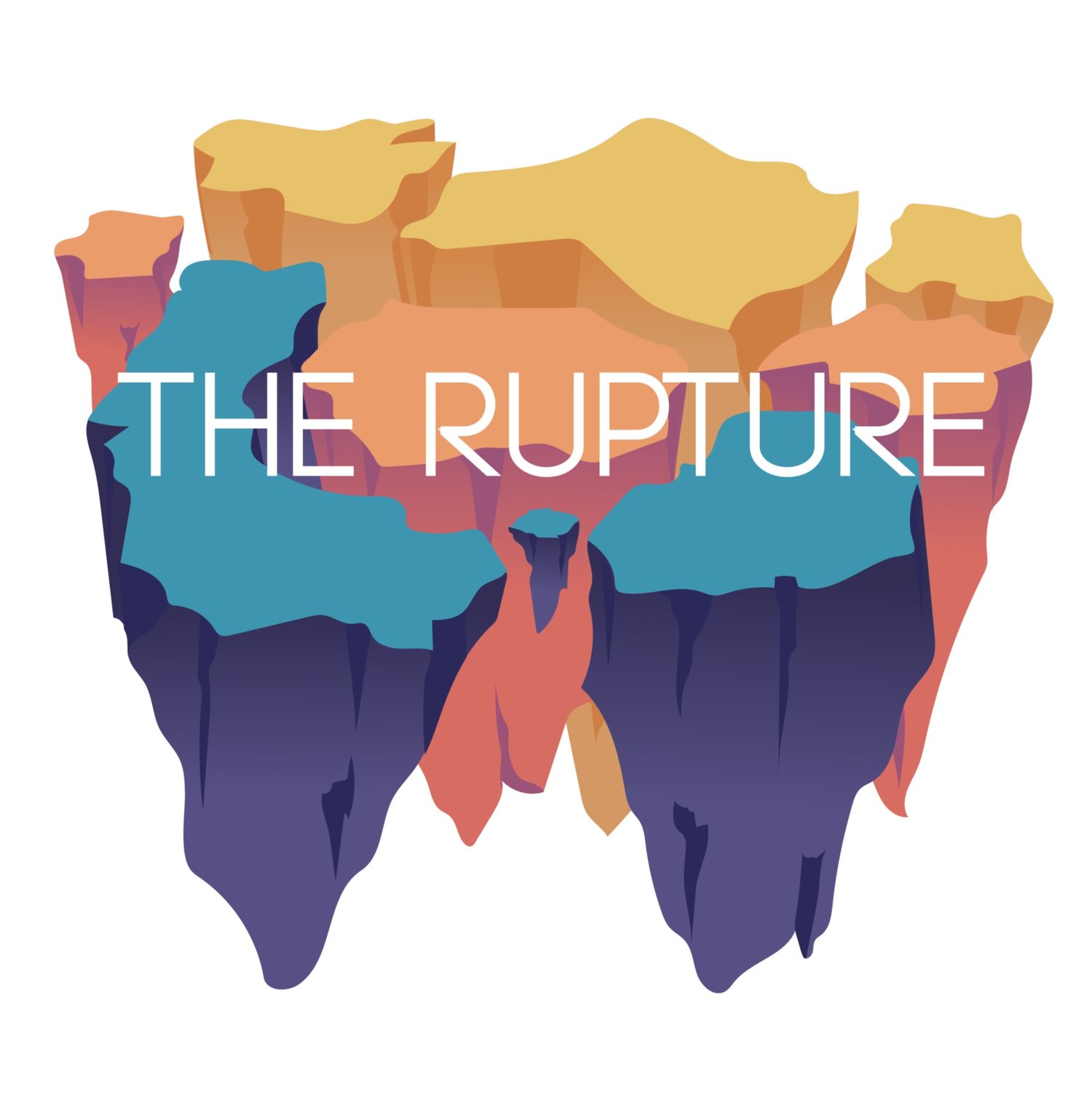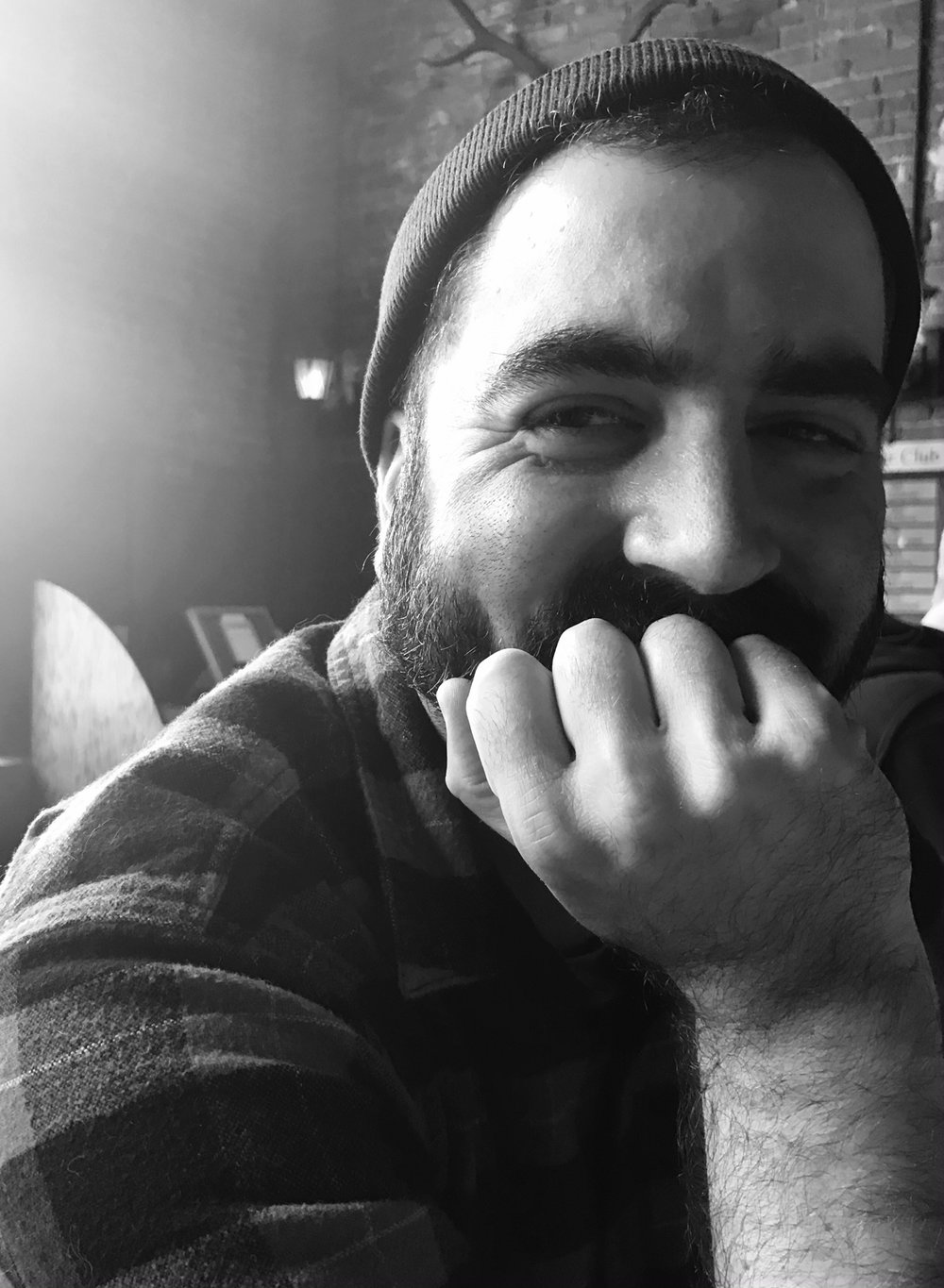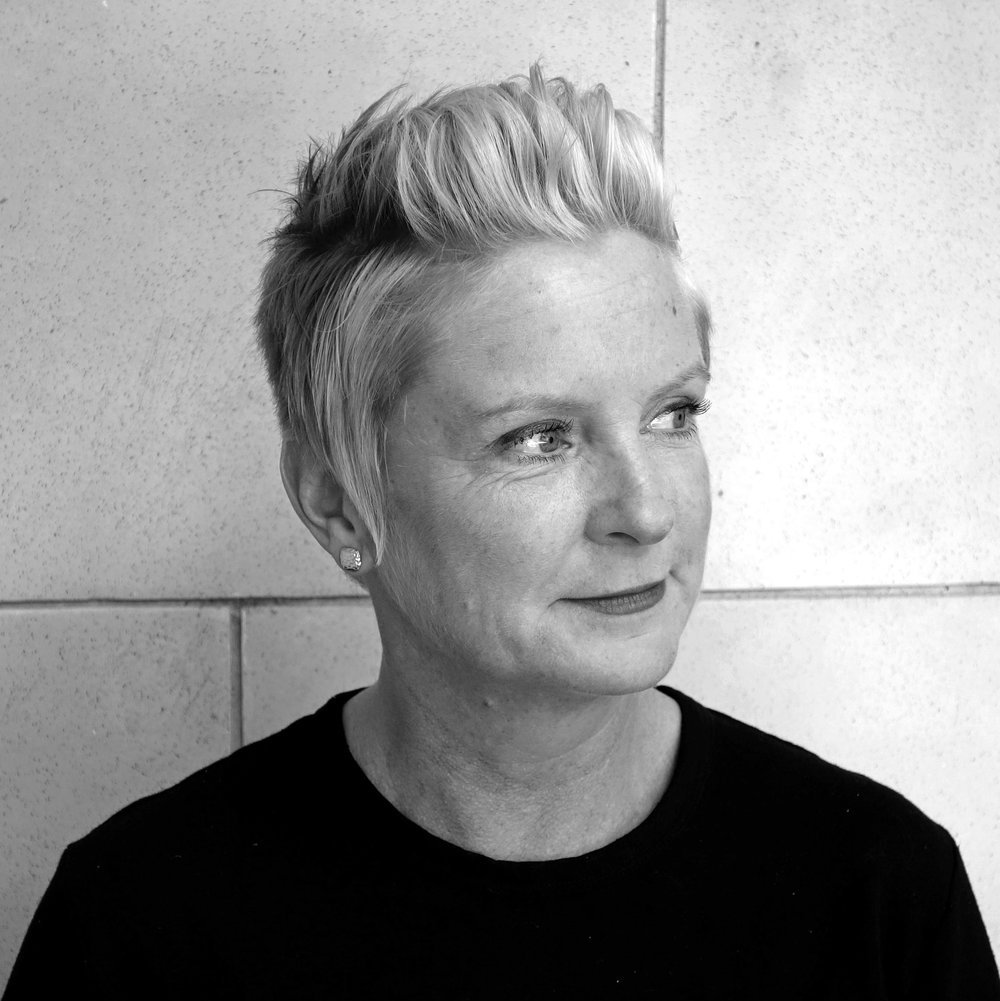 A. Joachim Glage lives and writes in Colorado, where he enjoys no longer being an attorney. "The Eighteen Possible Plots" is part of a series of fictions Glage is writing about imaginary books. Other pieces from this series have appeared recently, or are soon forthcoming, in such periodicals as The Georgia Review, Litmag (online), Philosophy and Literature, and others.
A. Joachim Glage lives and writes in Colorado, where he enjoys no longer being an attorney. "The Eighteen Possible Plots" is part of a series of fictions Glage is writing about imaginary books. Other pieces from this series have appeared recently, or are soon forthcoming, in such periodicals as The Georgia Review, Litmag (online), Philosophy and Literature, and others.
His story, "The Eighteen Possible Plots," appeared in Issue 100 of The Collagist.
Here, he speaks with interviewer Andrew Farkas about imaginary and fabulous books, the role of irony in narrative technique, and Borges clones.
Please tell us about the origins of "The Eighteen Possible Plots." What sparked the initial idea and caused you to start writing the first draft?
My original plan was to write a nonfiction, literary-theoretical essay about my idea of “the dialectic in reverse” and its applicability to certain science-fiction narratives. Somehow I ended up with “The Eighteen Possible Plots” instead. I won’t rehearse the notion of “the dialectic in reverse” here—it’s presented plainly and straightforwardly in the story—but suffice it to say that I do take it somewhat seriously. I am especially fond of the way it seems to describe our relationship with death: that death is but a faraway abstraction when we are young, but then, as we grow older, it begins to inspire religious thoughts (of judgment or souls or the afterlife), and then, as we get very close to it, it begins to seem like a living, breathing thing, like a creature. I think the “dialectic in reverse” could be an effective tool for science-fiction and narrative studies, should someone ever be inclined to use it.
What I am struck by in "The Eighteen Possible Plots" is the obsessive attention to detail in fabricated scholarship (you even created what appears to be a mimeograph of the fictional book this piece focuses on). Certainly, you could have just told us about Dmitry's Shkolnikov's work and the various ideas about it and left it at that. What purpose, then, does all of this "scholarship" (especially the footnotes and the mimeograph) serve in the story?
I am currently at work on a series of fictions about imaginary and fabulous (and sometimes murderous) books, and “The Eighteen Possible Plots” is an installment in that series (other pieces from the series, by the way, can be found in recent or upcoming issues of The Georgia Review, Litmag, Philosophy and Literature, and others). In each of the stories from that collection, I experiment with two distinct but related literary-theoretical topics, which should provide an idea of why I am so interested in phony, made-up scholarship.
The first topic is very simple, and can be encapsulated in the phrase, The Aesthetic of Intellectual Authority. Whenever I take up a book by an especially erudite scholar like Harold Bloom or Fredric Jameson or Borges or Adorno, I am always struck by what I might call the casual genius of the writing, the ease with which it moves from one topic to another, invoking texts both classic and modern, grabbing up whole schools of thought along the way as if they were the wieldiest of objects—and always in a manner that makes it seem like what they’re saying should be plainly obvious to everyone: you believe it, you follow them, eagerly, even when you are painfully out of your own depth. I am interested in seeing if one can successfully deploy that aesthetic, that mode of intellectual authority, even when, as in my case, one has none.
The second topic is more devilish. I have a keen interest in the following question: To what extent is it possible for a work of fiction to lie to the reader? On the one hand, one might opine that it is impossible for a fictional story to lie, since it is, overtly, a work of fiction. On the other hand, one might think that everything in a work of fiction is a lie, and for the very same reason: because the work is, overtly, fictional. I am interested in a third possibility, that in fact there might be a particular sentence or passage in a fictional work that, in some distinct way, succeeds in lying to the reader. In “The Eighteen Possible Plots” there are several places where I attempt just such a deception. Some are very easy to spot. Obviously Darko Suvin, the great science fiction theorist (yes, he is a real person), never wrote anything about a book called The Eighteen Possible Plots (for yes, that is an imaginary book). Do the quotes that I attribute to Suvin about that book amount to lies? If not, why not? If so, why? Other (attempted) lies I tell: the phony scholars alongside the real ones; the non-existent issues of real journals; the imaginary letter sent to Henri Bergson, which is to be found at the (non-existent) “Bergson Center” at the (real) College de France; other made-up quotations attributed to real philosophers. Are any of these lies? Why or why not? There are several other attempted lies in the story that are not so easy to spot; I won’t spoil the fun by listing them all. If you happen to find one of them, do let me know what you think of it.
Although many people say they do not like irony, I continue to love it. And at the beginning of this story, I really felt like I was in for exactly that: irony. After reading "The Eighteen Possible Plots" several times, though, I'm no longer convinced there's any irony whatsoever in this piece. So, what are you doing with the notions of irony and sincerity here?
I am greatly pleased by this question. The role of irony in narrative technique is a private obsession of mine. And I appreciate the idea you’ve expressed here, that at some level there is nothing ironic about this story at all. I concur with that assessment; and yet, there may still be what we might call an ironic “level” at work in the piece, as evidenced by all the deceptions and lies listed in my answer to the previous question.
Let me admit that it is a fantasy of mine to write a story that supports both a “literal” and an “ironic” reading at once, with the two interpretive levels in productive confrontation with one another. I should also admit, of course, that such a feat is likely beyond my abilities. Nevertheless, I might cheekily invoke the four levels of medieval allegory here. Perhaps, in the manner of that old patristic typology, the “literal” level of the story would be that at which the story is read seriously, gravely, and on its own terms—in the present case, this is the level at which “The Eighteen Possible Plots” is just a story about a strange book from 1903 and its predictions about twentieth-century science fiction. The “allegorical” level, then, might refer everything back to the mysterious figure of Dmitry Shkolnikov himself (just as, according to medieval typological interpretive habits, various figures and episodes from the Old Testament could be understood as references to the life of Christ), and to the subtle possibility that he may actually have been an inhuman creature from the sea. Then, somewhere “above” those two levels, there would be the “moral” level (or what I might here call the “ironic” level), which refers the reader back to him- or herself, who, we now come to realize, has been repeatedly lied to, toyed with, by a deceptive narrator. Finally there would be the grander “anagogical” level, according to which everything in the story is really about death, that beast whose gleaming eyes and cold grim claws represent the universal or collective destiny of us all.
Is this too grandiose? Certainly. But then my own lack of irony crystallizes here; I’m in it, in part, for the grandiosity.
The danger in writing a story like this is that people might say, "Oh, but I've already read Jorge Luis Borges, Stanislaw Lem, and Vladimir Nabokov." You, in my opinion, managed quite skillfully to avoid that danger. How, then, did you work with, against, or around those writers when putting "The Eighteen Possible Plots" together?
Permit me to answer this question in a few different ways.
- A thousand second-rate Borges clones might be a fine thing today, maybe even a finer thing than the gaggles of writers currently being reviewed in the big papers. I see no danger in it.
- How dare you sully the name of the noble Borges by so much as pronouncing it in a question about my own paltry writing! To compare my writing, even unfavorably, to that of the master, Borges, is to commit an unforgivable blasphemy against him, who now resides in the literary pantheon alongside Shakespeare and Milton and Joyce. How dare you, sir or madam, how dare you.
- I can only try to write what I myself would want to read. If it reminds the reader of someone else, so be it. I, for one, haven’t read an author published in the last thirty years whose writing didn’t remind me of some previous writer’s work in some way or other. I’m okay with that.
- Don’t forget Flann O’Brien: the figure of de Selby from The Third Policeman looms large over my story. Don’t forget Calvino either, or Eco, or Machado de Assis, or even Cervantes (whose conceit that Don Quixote comes to him second-hand, mostly from scrolls written in Arabic, and that he is therefore not the father but only the step-father of the story, is arguably the very first impulse of what we might call modern literature). There are many others we could add to the list.
What have you been reading recently that you might recommend?
I’ll confine my recommendations to a few living authors who deserve more fame than they currently enjoy (even if some of them are quite well known already). Most of them are writers of what I would loosely call philosophical fiction:
- Brian Evenson (a master of the short form, a writer of weird and dark tales; Windeye is my favorite of his collections);
- James Warner (another master of the philosophical story, his recent fictions in Ninth Letter and The Georgia Review are glittering achievements);
- Amy Sackville (Painter to the King and Orkney are two of my favorite novels of the past ten years; there is a subtlety of thought in her writing that is exceedingly rare today; her sentences are also just so damn good);
- Lydia Davis (the greatest of all the masters of the abstract and spare short story; there has never been a writer who has built so great an edifice with as few and such sparse raw materials);
- John Wray (The Lost Time Accidents is one of the best books I’ve read in a long while; it straddles several genres, too: part literary novel, part scifi, part family epic);
- Eleanor Catton (like many, I was blown away by The Luminaries; she is one of the few authors today whose novels I would buy sight-unseen);
- Two great poets: Leila Chatti and Kim Addonizio (I read from them almost every day, almost like a habit; perhaps there’s no higher praise for a writer than that).
What are you writing these days?
I was inspired by Colin Winnette’s excellent Haints Stay to try my hand at a western; my story is about a man expecting, waiting, to be murdered by a gang of assassins. I also recently finished another installment in my series of fictions about imaginary books—this one about a six-thousand-page horror novel called The Requirements, which may or may not have been written by an evil spirit.



